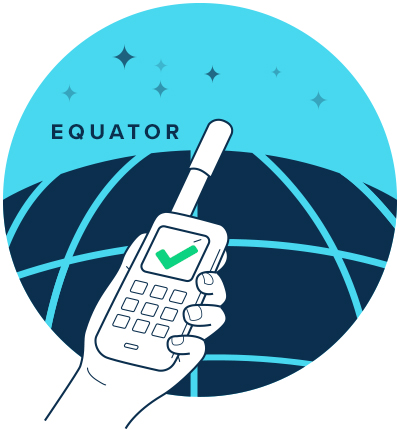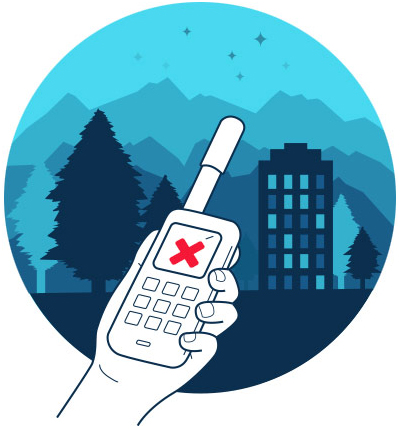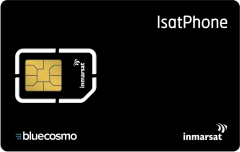
Inmarsat Network
Trusted world-wide communications coverage
About the Inmarsat Network
Inmarsat has been an industry leader in satellite communications since 1976. Offering satellite devices that have been engineered for field conditions and high-quality coverage, Inmarsat has become a backbone for critical communications.
For basic voice connectivity and low bandwidth (narrowband) data, Inmarsat IsatPhone offers near-global communications coverage except in the polar regions.
For those requiring broadband connectivity for live streaming, broadcasting or other data-intensive applications, the Inmarsat Broadband Global Area Network (BGAN) is only service of its kind. BGAN supports simultaneous voice and broadband data access, with speeds up to 492 kbps (up to 650 kbps with tethering on some devices), from portable laptop-sized BGAN devices from a range of manufacturers.

How Inmarsat Satellite Coverage Works?
Inmarsat operates 12 satellites in geosynchronous (GEO) orbit approximately 22,000 miles above the earth. The satellites are positioned to transmit radio beams in two global configurations covering the oceans and major land masses.
International travelers: Please research local laws before you travel as some countries don’t permit the use of satellite phones. For travel to India, note that local laws require airtime service be acquired from the local provider BSNL.
TIP: It is important to note that Inmarsat coverage extends from latitudes of -82° to 82° regardless of longitude, so higher latitudes like the polar regions are not covered.
Why Choose Inmarsat…
Inmarsat offers a range of equipment and service at an accessible price point and coverage everywhere except the polar regions. It’s a great option if you need a satellite phone, or need a combo of voice connectivity plus higher data speeds accessible from a portable BGAN device. NOTE: The antenna on Inmarsat devices must have an open view of the sky along the equator, so they are less suited to walking while talking.
Pros
- Near global (except Polar Regions)
- Good quality of service
- Broadband data (via BGAN)
- Affordable price point100% global coverage including the Poles
Cons
- No coverage in the polar regions
- BGAN broadband data usage can be costly
- Longer network registration times
- Best used in a stationary position with the antenna pointed toward the equator
How to Connect to the Inmarsat Network?

Best
Using an IsatPhone, ensure you are in a stationary position and orient the antenna so it has an unobstructed view of the sky toward the equator.

Avoid
Use your satellite phone near to tall buildings, trees or mountains that can obstruct the line of sight with satellites in the sky.
Note: The polar regions aren’t covered by the Inmarsat network.
Using an IsatPhone 2
FAQS
How to call a landline or cellular number using an IsatPhone?
- Example: + (country code) (area code/city code) (phone number)
- Example: + 1 416 253 6008
How to call an IsatPhone number from a landline or cell phone
- Example: +870x-xxxx-xxxx
How to call from an IsatPhone to another IsatPhone
- Example: +870x-xxxx-xxxx
Can I send and receive text messages using an IsatPhone?
How do I receive calls on my IsatPhone or BGAN terminal?
How do my contacts call my IsatPhone?
- Dial your IsatPhone phone number directly, which can be expensive depending on the network they are calling from. From North America, they would dial: 011-870x-xxxx-xxxx (your Inmarsat phone number).
- Add an optional Dedicated US Phone Number to your monthly service plan. With this option, you will be assigned your own US-based phone number, in addition to your Inmarsat phone number. Callers can reach you directly using either phone number. You pay a low monthly fee for this dedicated US number, and a low per-minute rate to receive calls made to your US phone number.


